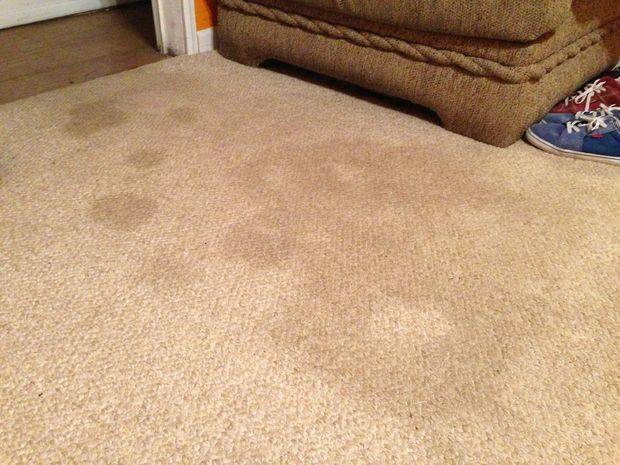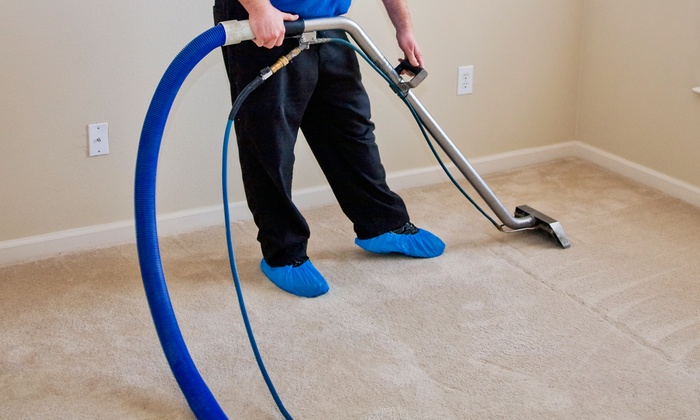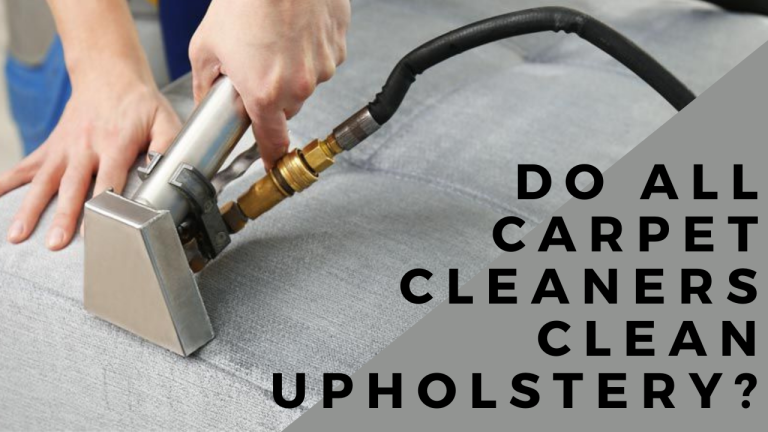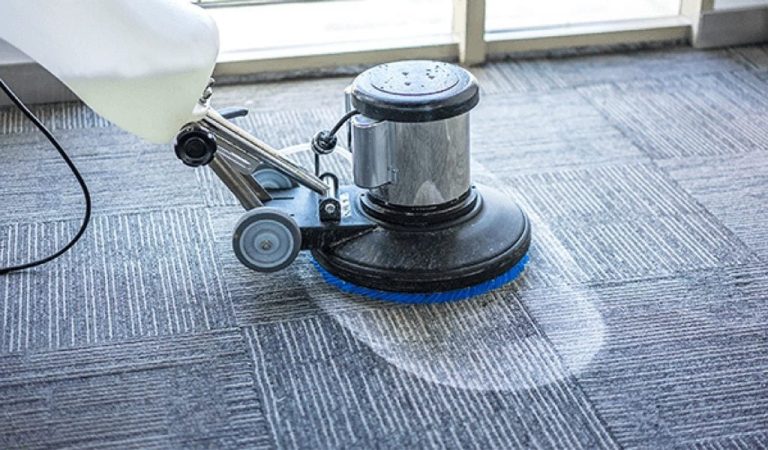Given the broad selection of residential flooring choices now available, including laminate, bamboo, tile, vinyl, timber, stone, and cork, carpeting remains a common alternative.
Apart from its comfort and softness, people like the rug and carpet because it needs less cleaning process and repair than hard-surface floors. To keep carpeting looking new and healthy, all that is usually needed is frequent vacuuming and the occasional deep clean scrubbing.
You may also like to read: ” How Do I Keep Insects and Beetles From Breeding in My Carpet? “
Even though carpeted floors look fantastic in almost every home and feel great under your feet – particularly bare feet as well as protect your hardwood or other strong surfaced floors, they can be challenging to keep clean at times and may need to be cleaned professionally on a monthly basis for long-lasting rug and carpet.
Carpet Clogs
Through your best intentions, your carpets can eventually get clogged with various types of soil, dust, and garbage by no fault of your own.
You may also like to read: ” Pet Urine and Ammonia Dangers in Your Carpet “
Spills, dirty pet feet, and everything else you track into the house on the bottoms of your shoes would inevitably attract spills on kitchen rug and carpet steam cleaning may be the only option to get it back to its original state.
One of the most effective ways to restore your carpets is professional steam cleaning. Using steam expelled at high pressure and high temperature, this method tackles bacteria, dust mites, and stubborn odours. It’s particularly adept at removing deep-seated dirt, mould, and lingering scents, giving your carpets a refreshed appearance and a thorough, deep clean—whether you’re sprucing up a busy household or maintaining a commercial property.

Simultaneously, it’s important that you keep the carpets as tidy as possible. Clean carpets would significantly increase the condition of the air in your house and make it smell a lot better than it does otherwise. Decluttering will also serve to make the home look more spacious and tidy.
Not only can your families prosper from clean rug and carpet, but your visitors will make a significant improvement as well.
Surface Cleaning vs. Deep Cleaning: Understanding the Differences
When it comes to keeping your carpet in tip-top shape, not all cleaning methods are created equal. Some happen right at the surface, taking care of everyday dirt and dust, while others go the extra mile, digging deep into the fibers to tackle what’s lurking underneath.
Surface Cleaning Methods
Surface or maintenance cleaning focuses on refreshing the look of your carpet and handling regular, day-to-day grime. Here are some common approaches:
- Dry Powder Cleaning: Also known as the “host system,” this method uses a soft, biodegradable powder mixed with water and cleaning agents. The mixture is sprinkled across the carpet, attracting dirt like mini-magnets. After a short dwell time, you simply vacuum it away. Because it targets only the uppermost fibres, it’s great for routine upkeep—especially in offices or busy homes that can’t afford downtime.
- Encapsulation Cleaning: This newer technique involves spraying a special cleaning solution onto the carpet, which surrounds and crystallizes dirt particles. Once dry, these particles are vacuumed up. Encapsulation uses minimal moisture and is ideal for high-traffic areas needing a quick turnaround. The results are impressive for a surface refresh, though it doesn’t cut through heavy grime.
- Bonnet Cleaning: Here, a self-neutralising detergent is lightly misted onto the carpet, and a rotary machine with a soft, absorbent pad gently agitates the surface. The pad picks up soil sitting at the top of the carpet fibers. While quick and convenient, it’s best suited for commercial spaces needing a fast fix between deeper cleans.
Deep Cleaning Methods
If your carpet looks tired or harbors stubborn stains and odors, it’s time to go beyond the basics. Deep cleaning methods dig down to remove embedded dirt and allergens:
- Hot Water Extraction (HWE): Sometimes called steam cleaning (though true steam isn’t usually involved), this method uses high-pressure hot water and eco-friendly detergents injected deep into the carpet. A powerful vacuum then lifts out the loosened dirt and moisture. The result? Carpets that look, smell, and feel fresher. HWE is a favorite for both homes and businesses, especially when a true reset is needed.
- True Steam Cleaning: Here, steam at high heat and pressure is used to sanitize carpets, banish bacteria, and neutralize odors. This is the gold standard for homes with allergy sufferers or pets, as it penetrates deeply and leaves carpets looking revitalized.
When to Use Each
Surface cleaning is perfect for regular maintenance and high-traffic zones where carpets need to look their best every day. Deep cleaning, on the other hand, is essential for long-term carpet health, tackling grime and contaminants that are impossible to reach with routine methods.
Whether you’re managing a bustling household or a busy office, knowing the right method for the job can keep your carpets in prime condition—minimizing wear, improving air quality, and extending the life of your flooring investment.
Advantages
There is a slew of other significant advantages to keeping your carpets clean, but the majority of this guide will concentrate on giving you the kind of insider knowledge that rug and carpet cleaning experts provide to help you speed up the operation.
You may also like to read: ” Advantages of Carpet Steam Cleaning That Are Sometimes Ignored “
These pointers can relieve you of a lot of the hard lifting that comes with holding carpets tidy, giving you an almost disproportionate edge over the dust, dirt, and clutter you’re trying to get rid of.
Deep-Cleaning Methods for Carpets
When routine vacuuming isn’t enough to reach the grime buried deep within your carpet, it might be time to explore more powerful solutions. Two time-tested techniques stand out when it comes to achieving a thorough, all-over clean:
- Hot Water Extraction: Sometimes called “steam cleaning” (though technically different), hot water extraction uses high-pressure jets of hot water mixed with a safe cleaning solution. This mixture is injected straight into the carpet fibres, loosening stubborn dirt, stains, and soil from deep within the pile. Then, a heavy-duty vacuum extracts all that grime along with the excess moisture. The result? A carpet that feels fresher and looks noticeably cleaner. This method is a go-to for both homes and businesses looking for a deep refresh.
- Professional Steam Cleaning: For serious deep cleaning, professional steam cleaning is another formidable option. Here, machines expel actual steam at elevated temperatures and strong pressure, which doesn’t just tackle dirt—it also helps neutralize odours, bacteria, dust mites, and even some types of mould. This process is especially valuable if you’re dealing with allergies or aiming for a truly sanitized environment.
Both methods are recommended by major carpet manufacturers and professional cleaners worldwide. They’re particularly effective if you want to maintain your carpet’s appearance, extend its lifespan, and banish hidden contaminants lurking out of sight.
The Five Main Types of Carpet Cleaning Techniques
If you’re keen on lifting your carpet cleaning game beyond just regular vacuuming, you’ll want to know the five key methods professionals use. Each has its strengths, and knowing them can help you choose the right solution for your space.
- Dry Powder Cleaning (Host System):
This technique uses a soft, natural cleaning compound lightly moistened with water and detergents. The mixture is distributed across your carpet, where it clings to dirt like a magnet. After a short period, it’s simply vacuumed up, taking surface grime with it. It’s fast, needs no drying time, and is ideal for routine maintenance, particularly in busy commercial settings. - Encapsulation Cleaning:
Encapsulation relies on specialized cleaning solutions that, when agitated into the carpet, surround (or “encapsulate”) dirt particles with a crystal-like coat. Once dried, these crystals—and the trapped dirt—are vacuumed away. It’s a low-moisture, quick-drying choice that keeps carpets looking fresher between deeper cleans, making it a favorite for hotels and offices. - Bonnet Cleaning:
Sometimes marketed as “dry cleaning,” but technically it’s a low-moisture method. A cleaning agent is misted lightly over the carpet, then a rotary machine with an absorbent bonnet pad buffs the surface. Think of it as a spa facial for your rug—primarily sprucing up the uppermost fibers, letting carpets dry in about half an hour. Great for maintenance in high-traffic areas. - Hot Water Extraction:
Often dubbed “steam cleaning” by the pros (even though it’s not true steam), this approach injects hot water and cleaning agents deep into your carpet. A powerful vacuum then pulls out loosened dirt and moisture. It’s a thorough deep-clean—ideal for tackling stubborn stains, pet messes, and ground-in soil at home or in the office. - Professional Steam Cleaning:
This method turns up the heat—literally. Using high-temperature steam, it eliminates bacteria, dust mites, and odors lurking in the fibers. The intense steam not only lifts dirt but also sanitizes, leaving carpets both cleaner and healthier. It’s a popular option for families wanting a fresh start or combating allergies.
By understanding these core carpet cleaning techniques, you’ll be better equipped to protect and preserve the rugs and carpets that make your home or office a cozy, healthy space.
Here are 7 stain-removal tips and strategies to maintain your carpets looking fresh
1. Regularly blot
If you’ve spilt liquid on the rug and carpet, gently blot it with a clean rag or paper towel from outside to inside to remove as much moisture as possible. Stop rubbing or scrubbing the mark so this would just disperse it use an appropriate cleaning solution will reduce time.

2. Avoid using stain removers from the store.
Accidents will happen no matter how much you work to avoid them, because the chances are that something dark like red wine, pasta sauce, or some dark substance will be spilt on your carpeted floor, forcing you to compete against the clock to keep it from staining.
You may also like: ” How to Make Carpet Look and Smell Like New Again? “
Unfortunately, in their hurry to save the stain from growing, several citizens climb on top of the accident and clean frantically. It, though, is the worst thing you might possibly do!
When you brush, the contaminants you’re attempting to get rid of will be pushed to ground themselves into the carpet, and the friction will produce a lot of heat, which will set the stains in motion so an ideal cleaning method has to be followed.

You’ll probably wind up breaking down the fibres you’re attempting to preserve looking clean and beautiful. Even if you can magically remove the stain, your carpet fibres would appear extremely worn in that region.
Instead, note to blot these stains out of the carpet with a smooth rag is highly recommended, adding just a slight amount of pressure and helping to cover up the substance that might otherwise have left a lasting mark.
Read about: ” Before or After a Party Carpet Cleaning “
Professionals use a trick that involves dampening the blotting cloth in the first instance since the water would act to draw the stain out of the linen back onto the cleaning cloth.
3. Wax removal methods
Are you trying to wash candle wax from your carpet?
It’s probably a lot simpler than most people imagine it would be to extract candle wax that has sunk into a rug and carpet and subsequently solidified.
Also like to read: ” How Carpet Cleaning Machines Remove Stain from Carpets? “
Skilled rug and carpet cleaners realise that the easiest method to remove candle wax is to reheat it and then take it out while it is still liquid so they use hot water extraction especially when it comes to upholstery cleaning.
This professional technique involves injecting a combination of high temperature water and cleaning agents deep into the carpet fibres at high pressure. The heat works to melt and loosen the wax, while the cleaning solution helps break up any remaining residue. Powerful vacuums are then used to extract the dirty water, wax, and debris from the carpet, leaving it clean and fresh.
Hot water extraction isn’t just effective for wax—it’s a go-to method for tackling deeply embedded dirt and stubborn stains that regular cleaning can’t reach. By drawing out grime from deep within the fibres, this process helps restore your carpet’s original look and feel, making it suitable for both commercial and domestic carpets.
If you don’t have access to professional equipment, don’t worry—there are still simple ways to tackle wax at home.
Place a clean cloth on the wax you wish to strip, then place your household iron on top of it and gently iron it before the wax falls out. Because of the pressure of the iron, the wax can stick to the fabric you’ve added, and you should be able to clear the rest of the candle wax after a couple of easy passes.

If some wax exists, a butter knife will almost often be used to scrape it clean. Simply stop ironing for more than 30 seconds at a time. If you do, your carpet will burn or melt, which is almost impossible to restore.
How does dry powder cleaning work for carpets?
If you’re looking for a low-moisture approach to carpet cleaning—say, something that won’t leave your living room soggy for days—dry powder cleaning might be your new best friend. Here’s how it goes: this method (often called the “host system”) uses a soft, biodegradable cleaning compound that’s gently mixed with a dash of water, a hint of detergent, and a safe solvent.
Once prepared, this concoction is sprinkled evenly across your carpet, almost like you’re lightly dusting icing sugar on a cake. The cleaning powder forms tiny clumps, resembling sawdust, which work their magic by acting as little sponges. These spongy particles set to work, attracting and absorbing soil and grime from the carpet fibres—no harsh scrubbing needed and no risk of soaking or shrinking your carpets.
After the mixture has had its moment to do the dirty work, you simply vacuum it up. What you’re left with is a fresher carpet minus any lingering dampness. This technique is perfect for regular upkeep—especially in busy, commercial environments where drying time is at a premium. Just keep in mind: while it’s excellent for everyday maintenance and quick refreshes, it doesn’t quite reach the deep-clean prowess of steam or hot water extraction. Still, for giving your carpet a surface-level spruce-up, dry powder cleaning certainly pulls its weight.
4. Maintain a daily vacuuming routine.
Vacuuming the carpet once in a while is still a smart idea. Vacuuming on a regular basis eliminates particles and soils that, if not removed, can settle to the carpet’s bottom and weaken the fibres. A vacuum not only enhances the quality of your carpet, but it also increases the life of your carpet.
5. Secure the carpets and upholstery
Scotchguard Carpet safety, such as Scotchguard, prevents stains from entering the fibres of your carpets and upholstery, making them easy to remove. Dry dirt should not adhere to the carpet and become abrasive as a consequence of this. If you’ve invested a lot of money on a high-end carpet, it’s worth it to invest in a shield.
6. Use the best stain removing technique.
- Blot out what you might see off the immediate spillage with a paper towel or a clean white rag.
- Make a 4 part to 1 mixture of fresh water and white vinegar in a spray bottle and spray it over the affected area, a little at a time
- Blot the area again to remove excess moisture and repeat the process until the stain is gone
- Place kitchen towels on top of the stain
- Remove the kitchen towels after a number of hours have elapsed.
Read more about: ” Carpet Cleaning Companies Provide More Than Just Spotless Carpets “
The stain has been properly cleaned if it is no longer apparent and hasn’t spread to the kitchen towels. Call in a specialist carpet cleaner if the stain is already visible who can get your rug and carpet cleaned and you may get a quality service from commercial rug and carpet cleaning companies thus giving you peace of mind.
But what does a professional actually do that sets them apart? Let’s break down some of the methods the pros use to keep carpets spotless:
- Dry powder cleaning: This technique uses a soft, natural cleaning product mixed with a bit of water, detergent, and solvent. The mixture is sprinkled over the carpet and forms clumps that act like mini sponges, absorbing dirt. After a short wait, these clumps are vacuumed up, leaving your carpet surface cleaner. It’s a great low-moisture option for regular maintenance, especially in busy spaces.
- Encapsulation cleaning: Here, the carpet is first vacuumed, then treated with an encapsulating chemical. A machine works the chemical in, wrapping dirt into dry crystals that are then vacuumed away. This method is fast, uses little moisture, and gets carpets back in action quickly—a lifesaver in high-traffic areas.
- Bonnet cleaning: Sometimes called “dry cleaning,” this method isn’t truly dry, but it is low-moisture. A self-neutralising detergent is sprayed onto the carpet, then agitated with a rotary scrubber fitted with a cotton bonnet pad. This lifts dirt from the surface, and carpets usually dry within half an hour. It’s ideal for quick touch-ups in offices or common areas.
- Hot water extraction: This is the classic deep clean. Hot water mixed with cleaning agents is injected into the carpet under pressure, loosening dirt and stains from deep within the fibres. A powerful vacuum then removes all that grime-laden water. This method is effective for both homes and businesses and is especially good for dealing with stubborn messes.
- Professional steam cleaning: Here, high-pressure steam tackles bacteria, dust mites, and odours. It’s a thorough method for removing dirt, mould, and lingering scents, leaving carpets both clean and refreshed.
Professional cleaners choose the best technique based on your carpet’s material, the nature of the stain, and the level of soiling. So, if you’re dealing with a particularly tough carpet situation, letting the experts take over ensures your floors get the care they need—and saves you a world of hassle.

7. Employ a carpet cleaner on a daily basis
If you have a family and the carpets are always stepped on, you can invest in a good rug and carpet cleaning once a year, or once every six months if you have pets. If you’re the only one in the building, once every 12 months should be enough. The change creates in your home would astound you.
Also read: ” Benefits Of Using An Eco-Friendly Carpet Cleaning Company “
If you wait too long to get your carpet washed, you risk damaging the fibres and making cleaning more challenging.
How Do Technicians Choose the Right Carpet Cleaning Method?
Professional carpet cleaning technicians bring more to the table than just powerful equipment—they’re trained to assess your carpet’s unique needs before starting any job. Rather than relying on a one-size-fits-all solution, they examine several key factors:
- Carpet Type and Fiber: Whether it’s plush wool, synthetic, or a delicate antique rug, the material dictates the method. For instance, Berber carpets often respond better to dry cleaning, while deep-pile or shag might require steam cleaning or hot water extraction.
- Level and Type of Soiling: They’ll check how much dirt, dust, or stains your carpet is holding onto. High-traffic zones or areas with ground-in pet hair may call for more intensive techniques.
- Desired Results and Special Concerns: Do you need stain removal, allergy reduction, or a general refresh? If someone in your home has sensitivities, technicians might recommend eco-friendly or low-residue options.
- Manufacturer Recommendations: Reputable brands like often specify preferred care methods, which technicians always take into account to preserve your warranty.
Ultimately, the best technicians combine this knowledge with their experience—so you get a tailored approach that’s gentle on your carpets and tough on grime.
8.Hiring a Professional
You already have ample insider experience to contend with virtually every carpet cleaning challenge that emerges. This is the sort of knowledge that experienced rug and carpet cleaners have provided for years, but that most homeowners never find out about until it’s too late.
Get Rug and Carpet Cleaning Quote
For instance, even though you use any of the methods described above, you can not be able to clear a stain in certain cases. Some of those stains will sink in, and you’ll have no hope of removing them without the equipment and technologies available from experienced carpet cleaning service who provide satisfaction guaranteed jobs.




